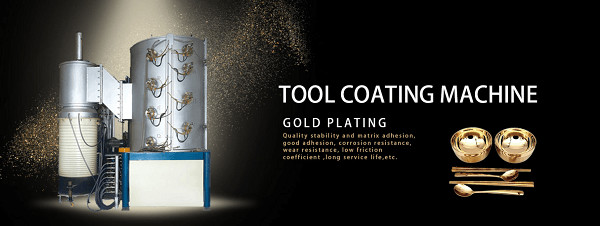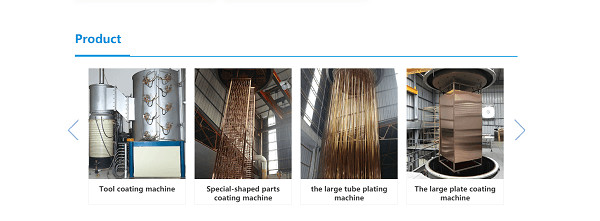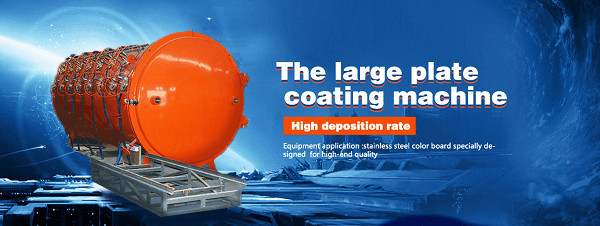Preparation of Silver Modified Nitrogen-doped TiO2 Film and Its Photocatalytic Performance
TiO2 has photocatalytic activity, so it is widely used in wastewater treatment, air purification, exhaust gas treatment and other fields. Studies have shown that the doped TiO2 film has better photocatalytic activity. Among the many elements that can be doped, N and Ag have unique performance characteristics, so they can greatly improve the photocatalytic activity of TiO2 films. In this paper, DC magnetron sputtering method and target-mixing process were used to prepare silver-modified nitrogen-doped TiO2 films with different Ag content, and the morphology, structure, surface element chemical state, optical properties and visible light catalytic activity of the films were analyzed. Studies have shown that the Ag content during film deposition has a greater impact on film properties. On the surface of TiO2, the particles are fine and uniform. With the increase of Ag content, convex particles appear on the surface of the film, which are Ag2O particles, and their size gradually increases; the film's absorption of light in the 350-800 nm band increases. When the Ag content is 6.76% (atomic ratio), the film has the highest visible light catalytic activity.
Since Fujishima and Honda first discovered that TiO2 electrodes can photoelectrolyze water in 1972, TiO2 has been used as an ideal waste water and waste gas treatment material in the fields of advanced tap water treatment, air purification, and exhaust gas treatment. However, pure TiO2 has some shortcomings in practical applications: ① Its band gap is wide, and its light absorption is only limited to the ultraviolet region with a short wavelength, and it does not reach 10% of the solar spectrum irradiated to the ground, which limits the use of solar energy. ②Photo-generated carriers are easy to recombine, so their light quantum efficiency is low, which affects the photocatalytic efficiency. These shortcomings limit its practical application. How to improve the spectral response, light quantum efficiency and photocatalytic reaction speed of TiO2 is the current research hotspot.
Scholars have been committed to improving the photocatalytic activity of TiO2, mainly through non-metal and metal element doping, precious metal modification and other methods to overcome the problem of low utilization of pure TiO2. Doping nitrogen in TiO2 changes its energy band structure through the energy band interaction between nitrogen atoms and TiO2, so that the absorption limit is red-shifted, which can effectively improve the utilization of TiO2 for visible light. Asahi studied nitrogen-doped TiO2 and found that replacing a small amount of lattice oxygen by nitrogen can narrow the band gap of TiO2, which does not reduce the ultraviolet light activity, but also makes the TiO2 photocatalyst light absorption limit redshift, and has visible light catalytic activity. Silver modification not only reduces the recombination probability of photogenerated carriers, its surface plasmon resonance effect also improves the photoresponse of TiO2 in the visible light range. Compared with other precious metals such as platinum and palladium, silver is more likely to undergo oxidation and reduction reactions during the preparation process due to its moderate electronegativity, and the resulting decomposition and agglomeration are more conducive to the formation of nanoparticles. At the same time, its low price makes it more suitable for industrial production. Fang et al. used ion-assisted deposition to prepare Ag2O-modified nitrogen-doped TiO2 films and found that the incorporation of nitrogen can effectively reduce the size of Ag2O nanoparticles and TiO2 grains. Part of Ag2O was reduced after illumination, indicating that Ag2O can also effectively capture photogenerated electrons and promote the separation of carriers. It can be seen that the vacuum technology network (http://www.chvacuum.com/) believes that the coupling effect of nitrogen and silver can greatly improve the photocatalytic performance of TiO2 films in the visible light region.
vacuum coating machine,pvd coating machine,pvd vacuum machine,vacuum ion coating machine,multi-arc ion coating machine
In this paper, magnetron sputtering was used to prepare nitrogen-doped TiO2 films with different Ag content, and the morphology, surface element chemical state, optical properties and visible light catalytic activity were analyzed, and the influence of Ag content on film properties was studied.
1. Test materials and methods
A JGP450A2 ultra-high vacuum magnetron sputtering system was used to prepare nitrogen-doped TiO2 (TiON) film and silver-modified TiON film samples. The target material adopts the target-mixing process, and the Ag sheet is placed on the Ti target (purity 99.99%), and the Ag content is controlled more accurately by controlling the area of the Ag sheet. In the experiment, silver modified nitrogen-doped TiO2 films with silver content of 0%, 0.57%, 2.44%, and 6.76% were prepared, and the sputtering gas was N2 (purity 99.99%) and O2 (purity 99.99%). The film substrates are 10 mm × 10 mm silicon wafers and 38 mm × 25mm glass slides. After acetone ultrasonic cleaning, ethanol ultrasonic cleaning, and deionized water ultrasonic cleaning, they are dried by nitrogen and placed into the sample table. Silicon wafers are used for scanning electron microscopy (SEM), X-ray photoelectron spectroscopy (XPS) analysis, and glass slides are used for X-ray diffraction (XRD), ultraviolet-visible light (UV-Vis) spectrophotometer and photocatalytic performance testing. The process parameters of magnetron sputtering are shown in Table 1. Wang Ke used magnetron sputtering to prepare TiON thin films and studied the effect of nitrogen partial pressure on the surface morphology and photocatalytic properties of the thin films. When the nitrogen partial pressure is 80%, the crystallite size of the film is the smallest and has a higher specific surface area. Although the crystallinity is not high, Jiang N et al. have proved that after the crystallization of TiO2, the increase in crystallinity has little effect on the photocatalytic activity. The TiON film has better visible light catalytic activity under this nitrogen partial pressure. Therefore, the partial pressure of nitrogen used in this experiment is 80%.
vacuum coating machine,pvd coating machine,pvd vacuum machine,vacuum ion coating machine,multi-arc ion coating machine
Table 1 TiO2 and TiON film deposition process parameters
TiO2 and TiON film deposition process parameters
In the experiment, Sirion field emission SEM was used to observe the surface morphology of the film; Model Bruker D8-Discover XRD was used to analyze the phase composition of the film; Kratos AXIS Ultra DLD XPS was used to analyze the film surface composition and element chemical state. The standard test method used to measure the photocatalytic degradation ability of TiO2 film samples is as follows: The degradation object is a rhodamine B (RhB) solution with a concentration of 2 mg/L, and a spherical xenon lamp with a power of 150 W is used to simulate natural light sources. , The sample is dropped into a cuvette, and the absorbance value of the RhB solution at 554 nm is measured with a Cary 5000 optics UV-visible spectrophotometer. According to Lambert Beer's law, the absorbance of a very dilute solution (less than 0.01 mol/L) is directly proportional to the concentration of the light-absorbing substance. Compare the absorbance value of the initial RhB solution at 554 nm to get the proportion of RhB degraded by photocatalysis to characterize the rate of the photocatalytic reaction. After the measurement, pour the cuvette solution back into the beaker to continue the photocatalytic degradation.
vacuum coating machine,pvd coating machine,pvd vacuum machine,vacuum ion coating machine,multi-arc ion coating machine
3. Conclusion
Based on the above experimental results and discussion, the following conclusions are drawn:
(1) The surface particles of the TiON film without Ag modification are fine and uniform. As the Ag content increases from 0% to 6.76%, raised particles appear on the surface of the film. The particles first increase in number and size, and then polarization occurs. Some particles shrink or even disappear, and other particles grow to form a film. The valence state of the surface Ag element is mainly univalent, which exists in the form of Ag2O. The Ag modification facilitates the transformation of Ti3 + into Ti4 + and stabilizes the N element in the TiO2 lattice.
vacuum coating machine,pvd coating machine,pvd vacuum machine,vacuum ion coating machine,multi-arc ion coating machine
(2) With the increase of Ag content, the film's absorption of light in the near ultraviolet-visible light band from 350 to 800 nm is significantly enhanced, that is, the film's light absorption in this band is enhanced. This is because the Ag2O particles in the film have a significant absorption of light in this wavelength range.
(3) As the Ag content increases from 0% to 6.76%, the visible light catalytic activity of the film gradually increases. Among them, the film with the surface Ag content of 6.76% has the highest visible light catalytic activity.
Founded in 2015,Zunhua Baorui Titanium Equipment Co.,Ltd. is a manufacturer specializing in pvd vacuum ion coating equipment. The company’s products mainly include large plate coating machine, large tube collating machine, tool coating machine and LOW-E glass production line. Mr.Wang baijiang ,general manager of the company ,has been engaged in vacuum coating industry for more than 30 years. He continuously improve production technology, improve product performance and devote himself to provide customers with better product experience and higher production efficiency.





